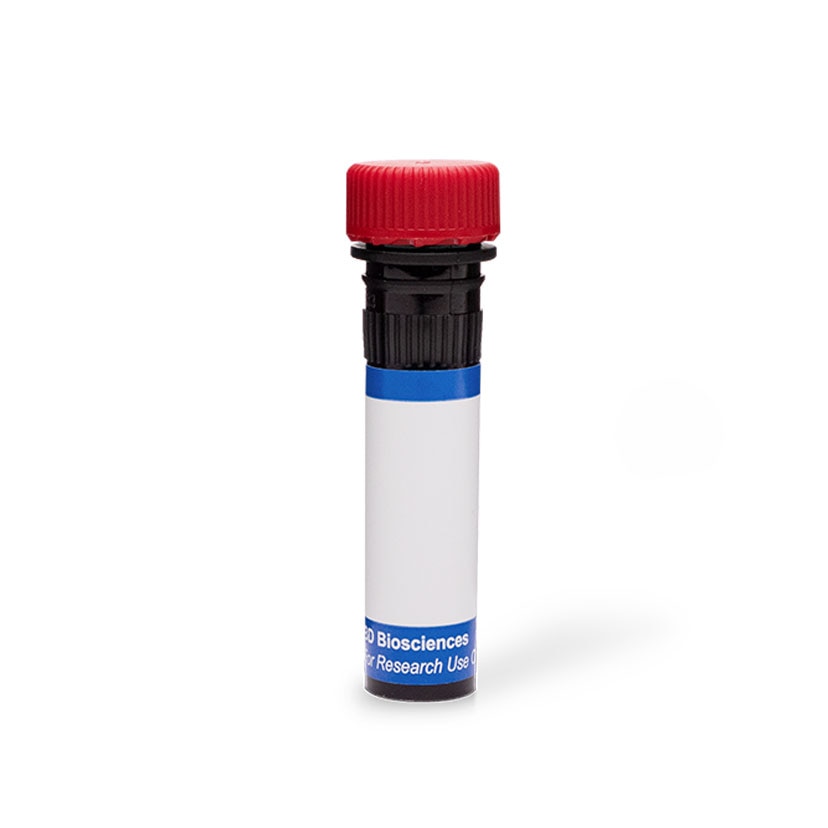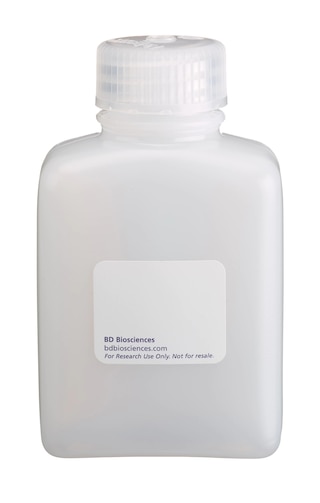-
Reagents
- Flow Cytometry Reagents
-
Western Blotting and Molecular Reagents
- Immunoassay Reagents
-
Single-Cell Multiomics Reagents
- BD® OMICS-Guard Sample Preservation Buffer
- BD® AbSeq Assay
- BD® Single-Cell Multiplexing Kit
- BD Rhapsody™ ATAC-Seq Assays
- BD Rhapsody™ Whole Transcriptome Analysis (WTA) Amplification Kit
- BD Rhapsody™ TCR/BCR Next Multiomic Assays
- BD Rhapsody™ Targeted mRNA Kits
- BD Rhapsody™ Accessory Kits
- BD® OMICS-One Protein Panels
-
Functional Assays
-
Microscopy and Imaging Reagents
-
Cell Preparation and Separation Reagents
-
- BD® OMICS-Guard Sample Preservation Buffer
- BD® AbSeq Assay
- BD® Single-Cell Multiplexing Kit
- BD Rhapsody™ ATAC-Seq Assays
- BD Rhapsody™ Whole Transcriptome Analysis (WTA) Amplification Kit
- BD Rhapsody™ TCR/BCR Next Multiomic Assays
- BD Rhapsody™ Targeted mRNA Kits
- BD Rhapsody™ Accessory Kits
- BD® OMICS-One Protein Panels
- Austria (English)
-
Change country/language
Old Browser
This page has been recently translated and is available in French now.
Looks like you're visiting us from United States.
Would you like to stay on the current country site or be switched to your country?
BD Pharmingen™ PE Rat Anti-Mouse CXCL16
Clone 12-81 (RUO)

Two-color flow cytometric analysis of CXCL16 expression in mouse splenocytes. C57BL/6 mouse splenic leucocytes were cultured in complete tissue culture medium with BD GolgiPlug™ Protein Transport Inhibitor (containing Brefeldin A) [Cat. No. 555029; 5h, 37°C). The cell were harvested, fixed with BD Cytofix™ Fixation Buffer (Cat. No. 554655), and then permeabilized with BD Perm/Wash™ Buffer (Cat. No. 554723). The cells were stained with FITC Hamster Anti-Mouse CD3e (Cat. No. 553062/553061/561827), BD Horizon™ BUV395 Rat Anti-Mouse CD19 (Cat. No. 563557/565965), APC Mouse Anti-Mouse NK1.1 antibody (Cat. No. 550627/561117), BD Horizon BV421 Rat Anti-Mouse CD11b (Cat. No. 562605) antibodies and either PE Rat IgG1, κ Isotype Control (Cat. No. 554685; Left Plot) or PE Rat Anti-Mouse CXCL16 antibody (Cat. No. 566740; Right Plot) at 0.5 µg /test. The two-color dot plot showing the correlated expression of CXCL16 (or Ig Isotype control staining) versus CD11b was derived from CD3- CD19- NK1.1- gated events with the forward and side light-scatter characteristics of intact splenocytes. Flow cytometry and data analysis were performed using a BD LSRFortessa™ Cell Analyzer System and FlowJo™ software. Data shown on this Technical Data Sheet are not lot specific.

Flow cytometric analysis of CXCL16 expression in mouse RAW264.7 cells. Cells from the RAW 264.7 (Macrophage ATCC TIB-71) cell line were cultured in complete tissue culture medium with BD GolgiPlug™ Protein Transport Inhibitor [5h, 37°C]. The cells were harvested, fixed with BD Cytofix™ Fixation Buffer, and then permeabilized with BD Perm/Wash™ Buffer and stained with either PE Rat IgG1, κ Isotype Control (dashed line histogram) or PE Rat Anti-Mouse CXCL16 antibody (solid line histogram) at 0.5 µg/test. The fluorescence histogram showing CXCL16 expression (or Ig Isotype control staining) was derived from gated events with the forward and side light-scatter characteristics of intact cells. Flow cytometry and data analysis were similarly performed and the data shown on this Technical Data Sheet are not lot specific.




Two-color flow cytometric analysis of CXCL16 expression in mouse splenocytes. C57BL/6 mouse splenic leucocytes were cultured in complete tissue culture medium with BD GolgiPlug™ Protein Transport Inhibitor (containing Brefeldin A) [Cat. No. 555029; 5h, 37°C). The cell were harvested, fixed with BD Cytofix™ Fixation Buffer (Cat. No. 554655), and then permeabilized with BD Perm/Wash™ Buffer (Cat. No. 554723). The cells were stained with FITC Hamster Anti-Mouse CD3e (Cat. No. 553062/553061/561827), BD Horizon™ BUV395 Rat Anti-Mouse CD19 (Cat. No. 563557/565965), APC Mouse Anti-Mouse NK1.1 antibody (Cat. No. 550627/561117), BD Horizon BV421 Rat Anti-Mouse CD11b (Cat. No. 562605) antibodies and either PE Rat IgG1, κ Isotype Control (Cat. No. 554685; Left Plot) or PE Rat Anti-Mouse CXCL16 antibody (Cat. No. 566740; Right Plot) at 0.5 µg /test. The two-color dot plot showing the correlated expression of CXCL16 (or Ig Isotype control staining) versus CD11b was derived from CD3- CD19- NK1.1- gated events with the forward and side light-scatter characteristics of intact splenocytes. Flow cytometry and data analysis were performed using a BD LSRFortessa™ Cell Analyzer System and FlowJo™ software. Data shown on this Technical Data Sheet are not lot specific.
Flow cytometric analysis of CXCL16 expression in mouse RAW264.7 cells. Cells from the RAW 264.7 (Macrophage ATCC TIB-71) cell line were cultured in complete tissue culture medium with BD GolgiPlug™ Protein Transport Inhibitor [5h, 37°C]. The cells were harvested, fixed with BD Cytofix™ Fixation Buffer, and then permeabilized with BD Perm/Wash™ Buffer and stained with either PE Rat IgG1, κ Isotype Control (dashed line histogram) or PE Rat Anti-Mouse CXCL16 antibody (solid line histogram) at 0.5 µg/test. The fluorescence histogram showing CXCL16 expression (or Ig Isotype control staining) was derived from gated events with the forward and side light-scatter characteristics of intact cells. Flow cytometry and data analysis were similarly performed and the data shown on this Technical Data Sheet are not lot specific.

Two-color flow cytometric analysis of CXCL16 expression in mouse splenocytes. C57BL/6 mouse splenic leucocytes were cultured in complete tissue culture medium with BD GolgiPlug™ Protein Transport Inhibitor (containing Brefeldin A) [Cat. No. 555029; 5h, 37°C). The cell were harvested, fixed with BD Cytofix™ Fixation Buffer (Cat. No. 554655), and then permeabilized with BD Perm/Wash™ Buffer (Cat. No. 554723). The cells were stained with FITC Hamster Anti-Mouse CD3e (Cat. No. 553062/553061/561827), BD Horizon™ BUV395 Rat Anti-Mouse CD19 (Cat. No. 563557/565965), APC Mouse Anti-Mouse NK1.1 antibody (Cat. No. 550627/561117), BD Horizon BV421 Rat Anti-Mouse CD11b (Cat. No. 562605) antibodies and either PE Rat IgG1, κ Isotype Control (Cat. No. 554685; Left Plot) or PE Rat Anti-Mouse CXCL16 antibody (Cat. No. 566740; Right Plot) at 0.5 µg /test. The two-color dot plot showing the correlated expression of CXCL16 (or Ig Isotype control staining) versus CD11b was derived from CD3- CD19- NK1.1- gated events with the forward and side light-scatter characteristics of intact splenocytes. Flow cytometry and data analysis were performed using a BD LSRFortessa™ Cell Analyzer System and FlowJo™ software. Data shown on this Technical Data Sheet are not lot specific.

Flow cytometric analysis of CXCL16 expression in mouse RAW264.7 cells. Cells from the RAW 264.7 (Macrophage ATCC TIB-71) cell line were cultured in complete tissue culture medium with BD GolgiPlug™ Protein Transport Inhibitor [5h, 37°C]. The cells were harvested, fixed with BD Cytofix™ Fixation Buffer, and then permeabilized with BD Perm/Wash™ Buffer and stained with either PE Rat IgG1, κ Isotype Control (dashed line histogram) or PE Rat Anti-Mouse CXCL16 antibody (solid line histogram) at 0.5 µg/test. The fluorescence histogram showing CXCL16 expression (or Ig Isotype control staining) was derived from gated events with the forward and side light-scatter characteristics of intact cells. Flow cytometry and data analysis were similarly performed and the data shown on this Technical Data Sheet are not lot specific.



ImageTitle~BD Pharmingen™ PE Rat Anti-Mouse CXCL16

ImageTitle~BD Pharmingen™ PE Rat Anti-Mouse CXCL16

ImageTitle~BD Pharmingen™ PE Rat Anti-Mouse CXCL16

Regulatory Status Legend
Any use of products other than the permitted use without the express written authorization of Becton, Dickinson and Company is strictly prohibited.
Preparation And Storage
Product Notices
- Since applications vary, each investigator should titrate the reagent to obtain optimal results.
- An isotype control should be used at the same concentration as the antibody of interest.
- Caution: Sodium azide yields highly toxic hydrazoic acid under acidic conditions. Dilute azide compounds in running water before discarding to avoid accumulation of potentially explosive deposits in plumbing.
- For fluorochrome spectra and suitable instrument settings, please refer to our Multicolor Flow Cytometry web page at www.bdbiosciences.com/colors.
- Please refer to www.bdbiosciences.com/us/s/resources for technical protocols.
Data Sheets
Companion Products






The 12-81 monoclonal antibody specifically recognizes C-X-C motif chemokine 16 (CXCL16) which is also known as Scavenger receptor for phosphatidylserine and oxidized low density lipoprotein (SR-PSOX), Transmembrane chemokine CXCL16, Small-inducible cytokine B16, or zinc finger MYND-type containing 15 (Zmynd15). CXCL16 is a single-pass type I transmembrane glycoprotein that can be enzymatically cleaved to generate a soluble form. CXCL16 is expressed by some macrophages and dendritic cells. Transmembrane CXCL16 can function as a scavenger receptor for oxidized low-density lipoproteins. CXCL16 has chemotactic activity as a ligand for the chemokine receptor, CXCR6, which is expressed by T cells including naïve CD8+ T cells, activated CD4+ or CD8+ T cells, NKT cells or TCR γδ T cells.

Development References (5)
-
Bachelerie F, Ben-Baruch A, Burkhardt AM, et al. International Union of Basic and Clinical Pharmacology. [corrected]. LXXXIX. Update on the extended family of chemokine receptors and introducing a new nomenclature for atypical chemokine receptors.. Pharmacol Rev. 2014; 66(1):1-79. (Biology). View Reference
-
Fukumoto N, Shimaoka T, Fujimura H, et al. Critical roles of CXC chemokine ligand 16/scavenger receptor that binds phosphatidylserine and oxidized lipoprotein in the pathogenesis of both acute and adoptive transfer experimental autoimmune encephalomyelitis.. J Immunol. 2004; 173(3):1620-7. (Clone-specific: Bioassay, Functional assay, Inhibition). View Reference
-
Shimaoka T, Nakayama T, Fukumoto N, et al. Cell surface-anchored SR-PSOX/CXC chemokine ligand 16 mediates firm adhesion of CXC chemokine receptor 6-expressing cells.. J Leukoc Biol. 2004; 75(2):267-74. (Immunogen: ELISA, Flow cytometry). View Reference
-
Shimaoka T, Seino K, Kume N, et al. Critical role for CXC chemokine ligand 16 (SR-PSOX) in Th1 response mediated by NKT cells.. J Immunol. 2007; 179(12):8172-9. (Clone-specific: Flow cytometry). View Reference
-
Veinotte L, Gebremeskel S, Johnston B. CXCL16-positive dendritic cells enhance invariant natural killer T cell-dependent IFNγ production and tumor control.. Oncoimmunology. 2016; 5(6):e1160979. (Biology). View Reference
Please refer to Support Documents for Quality Certificates
Global - Refer to manufacturer's instructions for use and related User Manuals and Technical data sheets before using this products as described
Comparisons, where applicable, are made against older BD Technology, manual methods or are general performance claims. Comparisons are not made against non-BD technologies, unless otherwise noted.
Please refer to Support Documents for Quality Certificates
Global - Refer to manufacturer's instructions for use and related User Manuals and Technical data sheets before using this products as described
Comparisons, where applicable, are made against older BD Technology, manual methods or are general performance claims. Comparisons are not made against non-BD technologies, unless otherwise noted.
For Research Use Only. Not for use in diagnostic or therapeutic procedures.